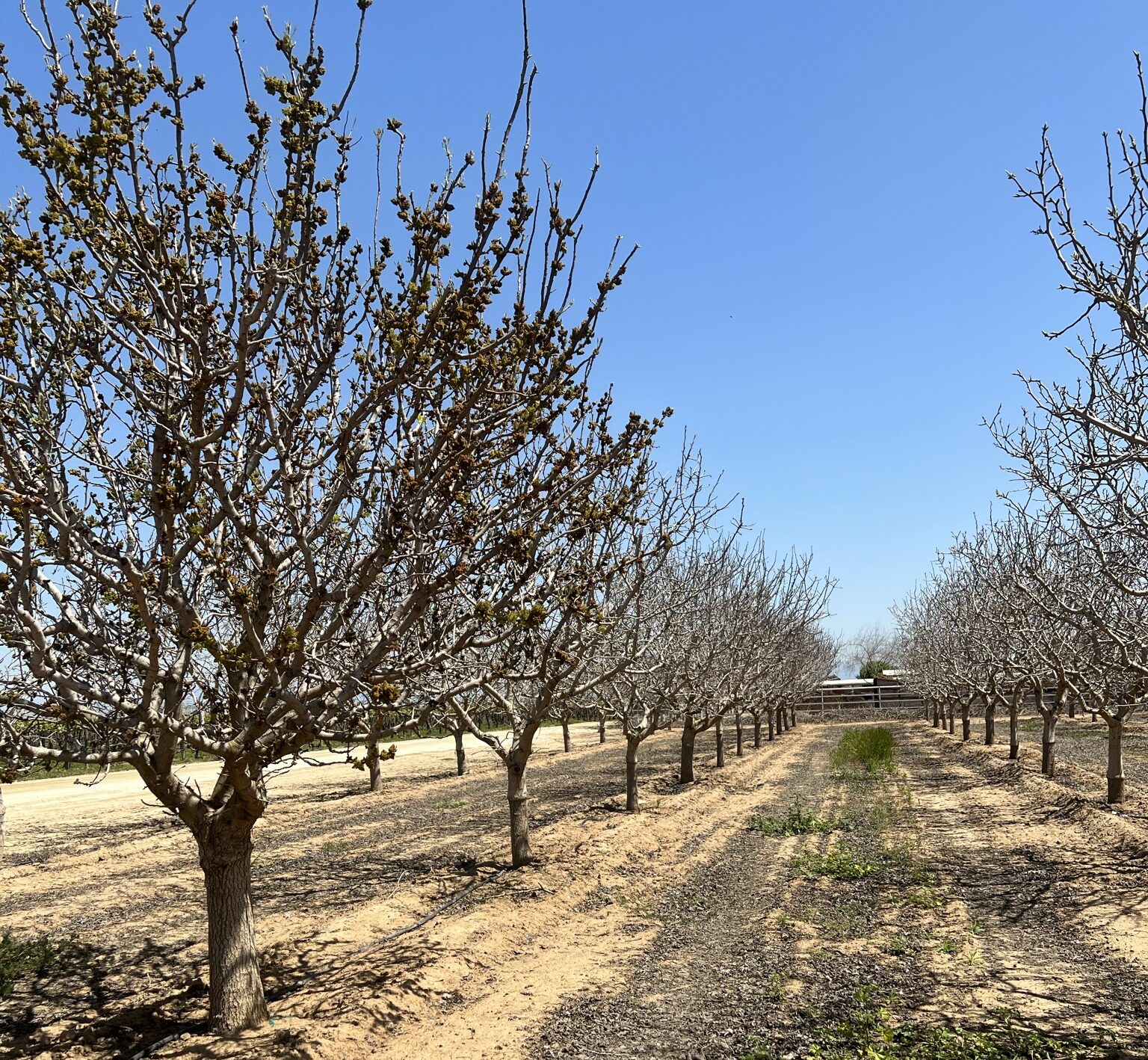
By: Elizabeth J. Fichtner, UCCE Tulare County
From mid-March through mid-May Ivanhoe residents may notice pollen emanating from local orchards and leaving a fine layer of dust on surfaces such as cars. Those with seasonal allergies may be hyper aware of the pollen count, as advertised on weather apps. The wind-blown pollen from four orchard crops in Tulare County, all grown near Ivanhoe, are partly responsible for both the dust and the allergy distress. Pistachio, walnut, pecan, and olive are all local wind-pollinated crops that bloom in spring, but their bloom may go largely unnoticed due to a lack of showy flowers.
The walnut, pistachio, and pecan bloom are somewhat understated in comparison to the splendid showy bloom associated with almonds and other fresh fruit crops. The showy flowers associated with almonds, cherries, and peach are adapted to attract the honey bee pollinators required to cross-pollinate the trees. Wind-pollinated crops do not rely on insects, and therefore do not put as much energy into producing beautiful flowers. Because they rely on the random direction of wind to transport pollen, each male flower produces a tremendous amount of pollen. The plant then relies on the successful deposition of a small percentage of that pollen on female flower parts. Walnut, pistachio, and pecan all produce separate male and female flowers. Pecan and walnut reproduce similarly, with female and male flowers (called catkins) borne on the same tree. Pistachio orchards contain male and female trees. The male trees serve only to produce pollen and do not produce nuts.
Olives produce one of the most highly allergenic types of pollen. Tulare County, however, has the largest commercial acreage of olives in California, and the pollen, albeit allergenic, is necessary to set the $30 million crop.
As deciduous trees leaf out, growers are busy applying foliar sprays which generally include micronutrients. The young leaves that are present just after bud break are better able to absorb foliar-applied nutrients than older leaves, so the timing of these applications is critical for growers to get the best economic return on the fertilizer investment. Growers will also be managing the weeds that have grown on the orchard floor through the rainy winter. Nitrogen is often applied to the soil surface approximately one month after bloom, when soil has warmed enough to promote root activity. Growers are actively monitoring for pests and diseases and are keeping a watchful eye for anomalies that might occur as a result of the intense rain in the spring.
Currently, much orchard acreage is at various stages of removal. Some orchards are scheduled for removal but the demand for orchard removal services exceeds the machinery available for these jobs. Widespread orchard removal is not related to plant disease but rather an adaptation to changes in the economic and regulatory factors impacting agriculture. Our local agricultural land may shift somewhat toward annual crops so planting decisions may be made on a year-to-year basis based on water availability.
Although the bloom of walnut, pecan, and pistachio may not be as showy, these trees produce a beautiful canopy as they leaf out. As spring progresses, enjoy watching the shoots and leaves expand, producing shady areas in our otherwise hot and open landscape while providing nutritious food for our community and world.

Comments are closed.